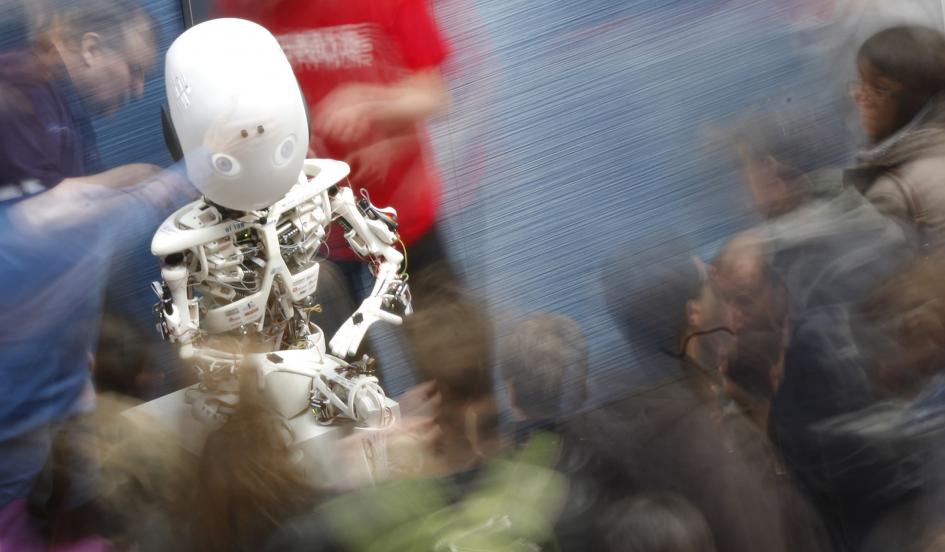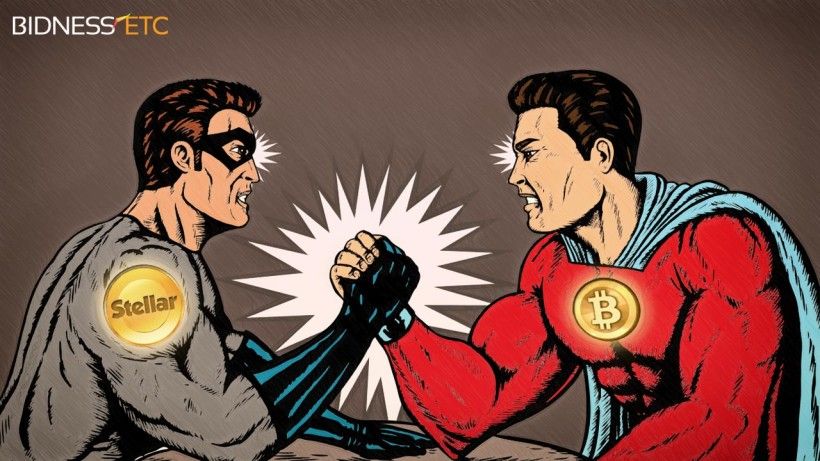Tanvi Misra | CityLab
“The idea is not just to teach city governments new techniques on harvesting open data to tackle urban problems and measure performance, but to replicate successful approaches that are already out there.“Read more
Zoltan Istvan | Motherboard
“Once uploaded, would your digital self be able to interact with your biological self? Would one self be able to help the other? Or would laws force an either-or situation, where uploaded people’s biological selves must remain in cryogenically frozen states or even be eliminated altogether?” Read more
Hal Hodson | New Scientist
“The focus is on medical applications to begin with…but the fact that it can sit discreetly behind an ear means that all kinds of other applications are feasible. No one wants to wear a headset constantly, but applying a hidden electronic tattoo once every two weeks is more acceptable.” Read more
Tom Simonite | Technology Review
“Nearly three-quarters of the people in HP’s research division are now dedicated to a single project: a powerful new kind of computer known as ‘the Machine.’ It would fundamentally redesign the way computers function, making them simpler and more powerful. If it works, the project could dramatically upgrade everything from servers to smartphones—and save HP itself.”
— NewsWeek
Despite his millions, the world of Moscow property development left Nikolay Gurianov “really bored.” Two motorbike crashes later, he reckoned it was time to move on, find a new business and swap two wheels for four.
He asked a marketeer: “What is the most interesting business that isn’t property, oil, armaments, diamonds, drugs or slavery?” And so began his career in IT—and a switch to Aston Martins.
In 2002, he set up Braintree, a technology outfit that helped Russian firms “optimise databases.” But databases too failed to ignite Gurianov. Drifting, he lit on artificial intelligence (AI). At last, here was a challenge fit for both intellect and wallet. Read more
By Tom Simonite — MIT Technology Review
Social-security and credit-card numbers frequently leak or are stolen from corporate networks—and surface on the black market. Adam Ghetti, founder of Ionic Security, says he has invented technology that could largely end the problem. His software keeps corporate data such as e-mails and documents encrypted at all times, except for when someone views it on an authorized computer or mobile device.
Workers at a company using Ghetti’s system can create and exchange e-mails or documents as normal. But Ionic’s software invisibly encrypts what they type on the fly. If someone tries to load a stolen document on a computer outside the company’s network, they would see only the encrypted data—a jumbled string of letters. “A network breach no longer has to mean a data breach,” says Ghetti.
By Tom Simonite — MIT Technology Review
A Stanford professor claims to have invented a Bitcoin-like system that can handle payments faster and with more security.
The total value of the digital currency Bitcoin is now approximately $3.4 billion, and many companies and investors are working to prove that the technology can make financial services cheaper and more useful.
But Stanford professor David Mazières thinks he has a faster, more flexible, and more secure alternative. If Mazières is correct, his technology could make digital payments and other transactions cheaper, safer, and easier—particularly across borders. He released the design for his system in a white paper last Wednesday. Read more
Until 2006 our Solar System consisted essentially of a star, planets, moons, and very much smaller bodies known as asteroids and comets. In 2006 the International Astronomical Union’s (IAU) Division III Working Committee addressed scientific issues and the Planet Definition Committee address cultural and social issues with regard to planet classifications. They introduced the “pluton” for bodies similar to planets but much smaller.
The IAU set down three rules to differentiate between planets and dwarf planets. First, the object must be in orbit around a star, while not being itself a star. Second, the object must be large enough (or more technically correct, massive enough) for its own gravity to pull it into a nearly spherical shape. The shape of objects with mass above 5×1020 kg and diameter greater than 800 km would normally be determined by self-gravity, but all borderline cases would have to be established by observation.
Third, plutons or dwarf planets, are distinguished from classical planets in that they reside in orbits around the Sun that take longer than 200 years to complete (i.e. they orbit beyond Neptune). Plutons typically have orbits with a large orbital inclination and a large eccentricity (noncircular orbits). A planet should dominate its zone, either gravitationally, or in its size distribution. That is, the definition of “planet” should also include the requirement that it has cleared its orbital zone. Of course this third requirement automatically implies the second. Thus, one notes that planets and plutons are differentiated by the third requirement.
As we are soon to become a space faring civilization, we should rethink these cultural and social issues, differently, by subtraction or addition. By subtraction, if one breaks the other requirements? Comets and asteroids break the second requirement that the object must be large enough. Breaking the first requirement, which the IAU chose not address at the time, would have planet sized bodies not orbiting a star. From a socio-cultural perspective, one could suggest that these be named “darktons” (from dark + plutons). “Dark” because without orbiting a star, these objects would not be easily visible; “tons” because in deep space, without much matter, these bodies could not meet the third requirement of being able to dominate its zone.
Taking this socio-cultural exploration a step further, by addition, a fourth requirement is that of life sustaining planets. The scientific evidence suggest that life sustaining bodies would be planet-sized to facilitate a stable atmosphere. Thus, a life sustaining planet would be named “zoeton” from the Greek zoe for life. For example Earth is a zoeton while Mars may have been.
Again by addition, one could define, from the Latin aurum for gold, “auton”, as a heavenly body, comets, asteroids, plutons and planets, whose primary value is that of mineral or mining interest. Therefore, Jupiter is not a zoeton, but could be an auton if one extracts hydrogen or helium from this planet. Another auton is 55 Cancri e, a planet 40 light years away, for mining diamonds with an estimated worth of $26.9x1030. The Earth is both a zoeton and an auton, as it both, sustains life and has substantial mining interests, respectively. Not all plutons or planets could be autons. For example Pluto would be too cold and frozen for mining to be economical, and therefore, frozen darktons would most likely not be autons.
At that time the IAU also did not address the upper limit for a planet’s mass or size. Not restricting ourselves to planetary science would widen our socio-cultural exploration. A social consideration would be the maximum gravitational pull that a human civilization could survive, sustain and flourish in. For example, for discussion sake, a gravitational pull greater the 2x Earth’s or 2g, could be considered the upper limit. Therefore, planets with larger gravitational pulls than 2g would be named “kytons” from the Antikythera mechanical computer as only machines could survive and sustain such harsh conditions over long periods of time. Jupiter would be an example of such a kyton.
Are there any bodies between the gaseous planet Jupiter and brown dwarfs? Yes, they have been named Y-dwarfs. NASA found one with a surface temperature of only 80 degrees Fahrenheit, just below that of a human. It is possible these Y-dwarfs could be kytons and autons as a relatively safe (compared to stars) source of hydrogen.
Taking a different turn, to complete the space faring vocabulary, one can redefine transportation by their order of magnitudes. Atmospheric transportation, whether for combustion intake or winged flight can be termed, “atmosmax” from “atmosphere”, and Greek “amaxi” for car or vehicle. Any vehicle that is bound by the distances of the solar system but does not require an atmosphere would be a “solarmax”. Any vehicle that is capable of interstellar travel would be a “starship”. And one capable of intergalactic travel would be a “galactica”.
We now have socio-cultural handles to be a space faring civilization. A vocabulary that facilitates a common understanding and usage. Exploration implies discovery. Discovery means new ideas to tackle new environments, new situations and new rules. This can only lead to positive outcomes. Positive outcomes means new wealth, new investments and new jobs. Let’s go forth and add to these cultural handles.
—
Ben Solomon is a Committee Member of the Nuclear and Future Flight Propulsion Technical Committee, American Institute of Aeronautics & Astronautics (AIAA), and author of An Introduction to Gravity Modification and Super Physics for Super Technologies: Replacing Bohr, Heisenberg, Schrödinger & Einstein (Kindle Version)
Article: Harnessing “Black Holes”: The Large Hadron Collider – Ultimate Weapon of Mass Destruction
Posted in astronomy, big data, computing, cosmology, energy, engineering, environmental, ethics, existential risks, futurism, general relativity, governance, government, gravity, information science, innovation, internet, journalism, law, life extension, media & arts, military, nuclear energy, nuclear weapons, open source, particle physics, philosophy, physics, policy, posthumanism, quantum physics, science, security, singularity, space, space travel, supercomputing, sustainability, time travel, transhumanism, transparency, treaties
Harnessing “Black Holes”: The Large Hadron Collider – Ultimate Weapon of Mass Destruction
Why the LHC must be shut down
CERN-Critics: LHC restart is a sad day for science and humanity!
Posted in astronomy, big data, complex systems, computing, cosmology, energy, engineering, ethics, existential risks, futurism, general relativity, governance, government, gravity, hardware, information science, innovation, internet, journalism, law, life extension, media & arts, military, nuclear energy, nuclear weapons, particle physics, philosophy, physics, policy, quantum physics, science, security, singularity, space, space travel, supercomputing, sustainability, time travel, transhumanism, transparency, treaties | 1 Comment on CERN-Critics: LHC restart is a sad day for science and humanity!
- Press release by our partner ”Risk Evaluation Forum” emphasizing on renewed particle collider risk: http://www.risk-evaluation-forum.org/newsbg.pdf
- Study concluding that “Mini Black Holes” could be created at planned LHC energies: http://phys.org/news/2015-03-mini-black-holes-lhc-parallel.html
- New paper by Dr. Thomas B. Kerwick on lacking safety argument by CERN: http://vixra.org/abs/1503.0066